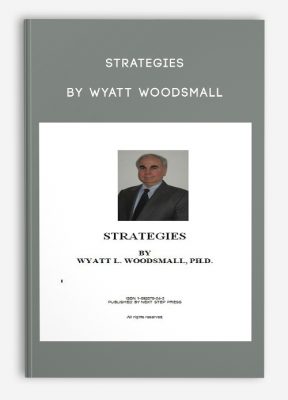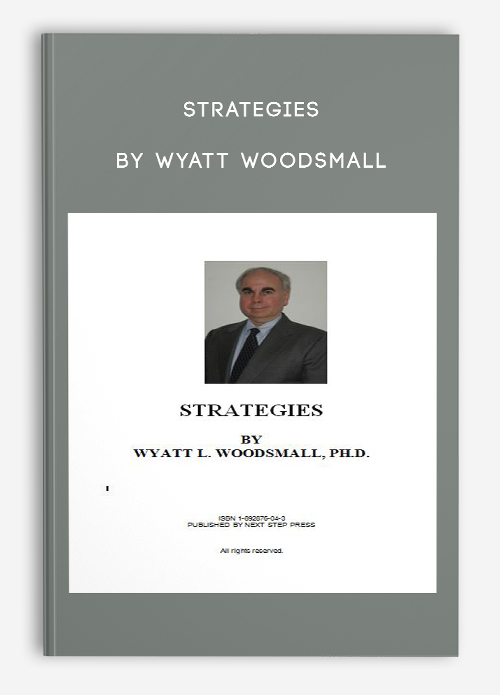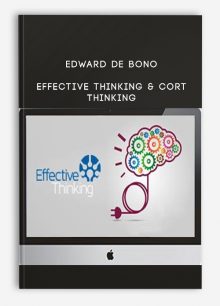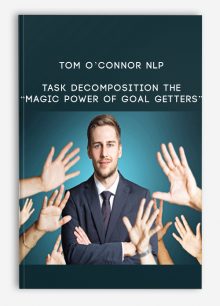Strategies by Wyatt Woodsmall
$55.00 $15.00

Strategies by Wyatt Woodsmall
Archive : Strategies by Wyatt Woodsmall
Get Strategies by Wyatt Woodsmall on Salaedu.com
Helping NLP Practitioners Understand Advanced Behavioral Modeling
What does the author (one of the world’s leading experts in Neuro Linguistic Programming) mean by the title ‘Strategies’?
According to Dr Woodsmall, there is a lot of confusion about strategies in the NLP community and this book will serve to remove some ofthis confusion. A ‘strategy’ is a sequence of representational accesses that a person goes through in order toachieve a certain outcome (make a decision, take some form of action). He goes on to say that life can be viewed as a near infinite sequence of representational accesses.
A person’s entire life is spent either:
- seeing pictures externally or remembering or constructing pictures internally or
- listening to sounds externally or remembering or constructing sounds internally or
- making sense of experience or experiencing sensations or
- remembering or constructing sensations or
- smelling or tasting or remembering or constructing smells or tastes.
Each person will have one or more sequences that they normally go through to perform any task.
People have habits and patterns of doing, feeling and thinking, and they tend to follow thesepatterns regularly. There is a good reason that they do so. At some stage when they were youngthese patterns emerged as arbitrary coping mechanisms. They worked at the time and werereinforced by repeated use.
One of the characteristics of human beings is that they tend to keep doing what works. These patterns may not be the most efficient or effective way of doing something, but they worked once and they have been continued to be used.
Sometimes they are used in other contexts than the ones they were developed in, and then they may work less efficiently or not at all. There are no good or bad strategies per se. Strategies are only useful or not useful to achieve certain outcomes.
Occasionally people have strategies that don’t work particularly well. They would like to be able todo more than they can with their present strategies. In this case it is possible to either model someone else with an effective strategy or to design a strategy specifically for them. Once astrategy is elicited from someone else or designed specifically for them, then the final step will be toinstall it in them.
Everything begins with the elements that make up a strategy; they are the basic building blocks of NLP and of Advanced Behavioral ModelingSM. Genius is based in part on having a highly effective strategy and in part on the ability to perform that strategy particularly well.
Using the following as an approximate breakdown of people’s representational systems in our society is 45% visual, 40% kinesthetic and only about 15% auditory tonal or auditory digital, this e-book deals with mastering the building blocks and how they relate to strategies.
The topics covered include:
- Visual Representation
- System Auditory Representation System
- Kinesthetic Representation System
- Olfactory and Gustatory Representation System
- Synthesis Patterns
- What each representation system is good for
- Eliciting strategies
- Decision strategies
- Motivation Strategies
- Learning Strategies
- Spelling strategies
As with other Woodsmall Ebooks this book provides a set of handouts for your continued implementation of each strategy to Help the NLP practitioner help their clients get better outcomes, or to help the individual better understand why they seem to keep making the same mistakes over and over again.
My opinion , very good one specially about describing submodalities , much more precise than some others .
1 review for Strategies by Wyatt Woodsmall
Add a review Cancel reply
Related products
HYPNOSIS - NLP Courses
HYPNOSIS - NLP Courses
Tom O’Connor NLP – Task Decomposition The “Magic Power of Goal Getters”
HYPNOSIS - NLP Courses
Niraj Naik – Renew Your Body & Reprogram Your Reality With SOMA Breathwork










king –
We encourage you to check Content Proof carefully before paying.
“Excepted” these contents: “Online coaching, Software, Facebook group, Skype and Email support from Author.”
If you have enough money and feel good. We encourage you to buy this product from the original Author to get full other “Excepted” contents from them.
Thank you!